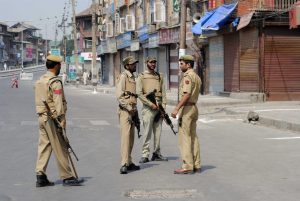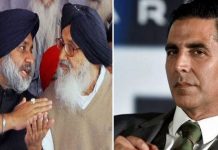
On July 7, the second death anniversary of the popular Hizbul Mujahideen commander Burhan Wani, Kashmir was under a tense lockdown. Security curbs were at their most stringent in South Kashmir and the downtown Srinagar. Large contingent of the forces was deployed on the streets to reduce the protesters’ ability to organise. In Tral, Burhan’s hometown, his grave was made out of bounds for the people. Security personnel also dotted the road leading to slain commander’s home. Separatist leaders were put under house arrest and JKLF supremo Yasin Malik was detained at a police station. But despite all these measures, the protests marked the day. There was also a complete shutdown in response to the separatist call.
If anything, this state of affairs shows how Burhan continues to loom large over the Valley two years after his death in an encounter with the security forces. Kashmir has not been same again since. In 2016, his killing not only triggered a five-month-long unrest leading to the killing of around a hundred people and blinding several hundred but it also lent a disproportionate boost to the local militancy. According to a security estimate, more than 65 local youth have joined militancy since January, among them the PhD scholar from Aligarh Mannan Wani, son of the top separatist leader Ashraf Sehrai, an IPS officer’s brother and also a youth Abid Hussain Bhat from Doda in Jammu province which had otherwise been declared free of militancy over the past one and a half decade.
In the past two months alone, twenty youth are estimated to have taken up arms.
Burhan’s influence has been fundamental in altering the dynamics of the situation. Security and the civil society opinion largely trace the new age militancy in the Valley to the advent of Burhan and his popularisation of the militancy as a glamorous occupation through a deft use of social media.
“Up until 2014, the militancy was a largely underground phenomenon. They had no public or media presence. They hid their identities and masked their faces if at all their pictures were taken,” said a police officer not wishing to be named. “But Burhan changed it all. He opted out of anonymity and aggressively used the social media to propagate militancy. This caught the fancy of the youth who until then used to hear only distantly about the militancy through reports of their deaths in a far away encounter.”
But many Kashmiri observers don’t think that the social media alone set off Burhan’s legend and that he alone ushered in the new militancy in the state. “Legend of Wani wasn’t a product of Facebook alone. Indeed, his Facebook pictures and videos made a difference. They also gave face to a name and made visible a reality that is supposed to operate in the underground. The fact is that Burhan was the first to do so in three decades of militancy and so he instantly hooked people,” said Naseer Ahmad, author of Kashmir Pending. “But this doesn’t completely explain the shift that followed. What also played a role was a deep sense of siege, disempowerment and alienation that had taken a deep root by the time Burhan emerged on the scene.”
This sense of alienation has only grown deeper since the killing of Burhan. And his legend has correspondingly grown. One big factor in this is believed to be “the militaristic, muscular approach” adopted by the centre towards the state. The clamour in Kashmir is for a meaningful political initiative geared to address the Kashmir issue.
“A sustainable political process which addresses itself to achieving a political settlement on the state will certainly deprive militancy of its raison and address the public unrest,” said Ahmad. “Security approach may keep militancy in check but it will not end it as its trajectory over the past three decades tells us. In the existing situation not only will Burhan live on and remain an inspiration but new Burhans will also keep emerging.”












